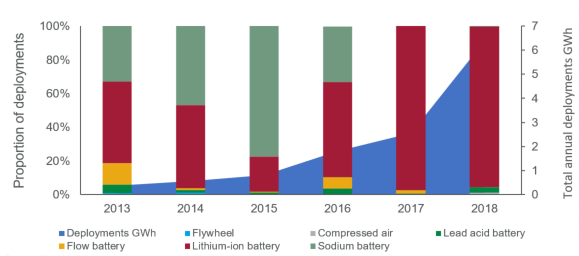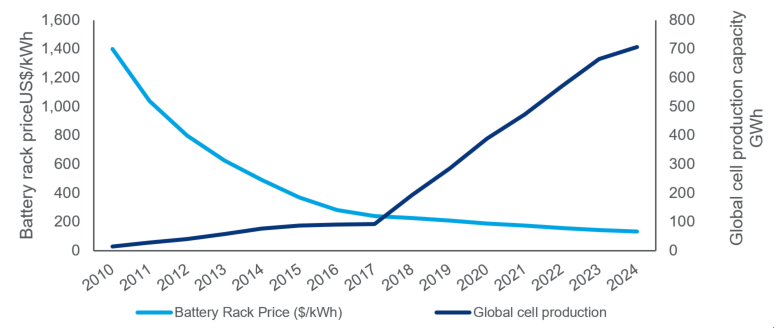What technology is winning the global energy storage race?
Lithium-ion is the clear winner, but it has one major drawback
1 minute read
Rory Mccarthy
Director, Power & Renewables Consulting EMEA

Rory Mccarthy
Director, Power & Renewables Consulting EMEA
Rory is a Director in the Power & Renewables Consulting division for Europe, the Middle East and African markets.
Latest articles by Rory
-
The Edge
Re-thinking energy transition supply chains
-
Opinion
Not made in China: the US$6 trillion cost of shifting the world’s clean-tech manufacturing hub
-
Opinion
2023: the year the European renewables bubble burst
-
Opinion
Will renewable auctions underpin Europe’s net zero ambitions?
-
Featured
Will 2021 be a record-breaking year for renewables auctions in Europe?
-
Opinion
Three reasons why Europe is set to lose the energy storage race
Storage technology is a crucial enabler of the energy transition. Competitively priced storage will have a significant influence on the power sector’s ability to shift away from its reliance on fossil fuels. The race is on to develop a winning solution that will help pave the way to a low-carbon future.
So far, this race has a clear winner: lithium-ion.
Lithium-ion made up 95% of the global stationary energy storage technology market last year. And it is set to dominate this landscape for the next 10 years.
What’s put lithium-ion in pole position?
EV revolution spurs investment at scale
Lithium-ion has a significant advantage over alternative storage technologies: economies of scale.
Since the first commercial lithium-ion battery came to market more than 30 years ago, it has been widely used by the consumer electronics industry in everything from our watches to our smartphones.
And as demand for electric vehicles increases, the motor industry has backed lithium-ion as its storage of choice. In the first half of 2019 alone, Daimler and Tesla invested a total of US$350 million into advanced lithium-ion technology companies.
Production at scale means significantly lower costs
The cost of a lithium-ion battery rack for a storage system has dropped by 85% since 2010.
Manufacturing capacity has scaled from 14 GWh to 285 GWh in the same period and is on track to more than double to 777 GWh by 2026.
And we expect prices to continue to drop by an average of 9% each year until 2026.
“Lithium-ion is beginning to be widely recognised as a fast-responding power technology that can help us to decarbonise.”

Rory Mccarthy
Director, Power & Renewables Consulting EMEA
Rory is a Director in the Power & Renewables Consulting division for Europe, the Middle East and African markets.
Latest articles by Rory
-
The Edge
Re-thinking energy transition supply chains
-
Opinion
Not made in China: the US$6 trillion cost of shifting the world’s clean-tech manufacturing hub
-
Opinion
2023: the year the European renewables bubble burst
-
Opinion
Will renewable auctions underpin Europe’s net zero ambitions?
-
Featured
Will 2021 be a record-breaking year for renewables auctions in Europe?
-
Opinion
Three reasons why Europe is set to lose the energy storage race
How will lithium-ion batteries support decarbonisation?
As volatile renewables become the primary source of electricity in the next one or two decades, the ability to balance supply and demand will become more challenging.
Lithium-ion energy storage will help to strengthen the reliability and resilience of electricity delivery, decoupling power supply from unpredictable and varying weather patterns.
Importantly, battery storage can respond to fluctuations in power demand in less than a second – something conventional assets simply can’t do.
But there’s one major drawback: time
Currently, lithium-ion energy storage systems are maxing out at around four hours.
While well suited to help with second-to-second system balancing, renewables ramping, and providing peak power services, for longer storage durations, we're going to need more than lithium-ion technologies.
Are there alternatives?
In the race to develop a winning storage solution, various other technologies will strive to compete with lithium-ion. It won’t be easy to beat on economies of scale, but for storage exceeding the four- hour mark, there’s a clear gap in the market.
Fill in the form at the top of this page to get your free copy of the insight.


